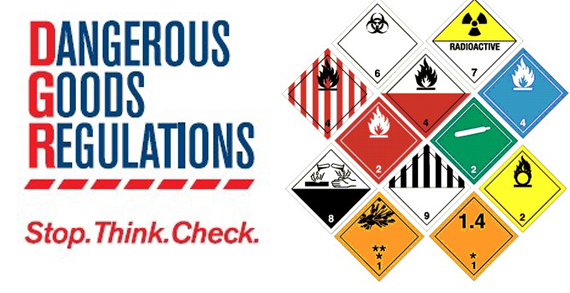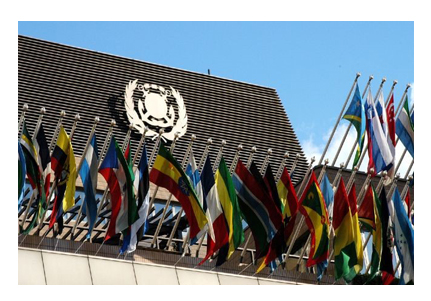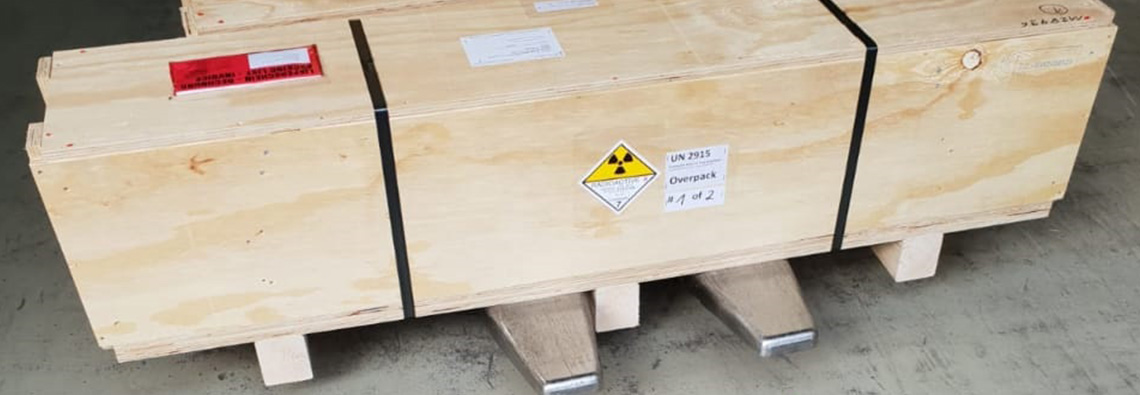Setting the standards leads to safety
The definition of standards for documentation, handling and training, as well as their promotion and use, contributed to achieving a very high degree of safety in the transportation of dangerous goods by air & Sea. Affreighter Logistics accredited by IATA International Air Transport Association) and qualified Dangerous Goods certified personal can assist you to ship Dangerous Goods by Air and Sea with safety standards.

Shipping Dangerous Goods.
Shipping dangerous goods is a very tricky business. This is why to avoid complications or problems while categorizing the aspect and level of danger; there is a set of classification for the dangerous goods. There are nine clauses in which the dangerous goods are classified. The dangerous goods labels and dangerous goods certificate for the cargo are issued as per the nine clauses which are explained as follows:
- Division 1.1: substances and articles which have a mass explosion hazard.
- Division 1.2: Substances and articles which have a projection hazard but not a mass explosion hazard.
- Division 1.3: Substances and articles which have a fire hazard and either a minor blast hazard or a minor projection hazard or both, but not a mass explosion hazard.
- Division 1.4: Substances and articles which present no significant hazard.
- Division 1.5: Very insensitive substances which have a mass explosion hazard.
- Division 1.6: Extremely insensitive articles which do not have a mass explosion hazard.
The 9 classes of Dangerous Goods:
Class 1: Explosives
- Division 2.1: Flammable gases.
- Division 2.2: Non-flammable, non-toxic gases.
- Division 2.3: Toxic gases.
Class 2: Gases
- There are no sub-divisions for Class 3 flammable liquids.
Class 3: Flammable liquids
- Division 4.1: Flammable solids, self-reactive substances and solid desensitized explosives.
- Division 4.2: Substances liable to spontaneous combustion.
- Division 4.3: Substances which in contact with water emit flammable gases.
Class 4: Flammable solids
Substances liable to spontaneous combustion; substances which, on contact with water, emit flammable gases.
- Division 5.1: Oxidizing substances.
- Division 5.2: Organic peroxides.
Class 5: Oxidizing substances and organic peroxides
- Division 6.1: Toxic substances.
- Division 6.2: Infectious substances.
Class 6: Toxic and infectious substances
- There are no sub-divisions for Class 7 Radioactive Material.
Class 7: Radioactive material
- There are no sub-divisions for Class 8 Corrosive Substances.
Class 8: Corrosive substances
- There are no subdivisions for Class 9 Miscellaneous Dangerous Goods.
Class 9: Miscellaneous dangerous substances and articles
What is International Maritime Dangerous Goods Code (IMDG)?
The International Maritime Dangerous Goods or IMDG Code was adopted in 1965 as per the SOLAS (Safety for Life at Sea) Convention of 1960 under the IMO. The IMDG Code was formed to prevent all types of pollutions at sea.
The IMDG code also ensures that the goods transported through seaways are packaged in such a way that they can be safely transported. The dangerous goods code is a uniform code. This means that the code is applicable for all cargo-carrying ships around the world.
What is IMO?
The first international treaty of any kind between nations can be traced back to the treaty of 'safety of life at sea' – SOLAS, which was adopted by a few nations, post the disaster of Titanic. Though the IMO was established in 1948 in Geneva, it was not enforced until 1959 at a meeting held at London, its headquarters.

Hazardous Containers & Dangerous Goods by Sea
If your business needs to ship hazardous goods, such as flammable aerosols or radioactive substances, you are required to label the cargo as dangerous and follow certain regulations under the International Maritime Dangerous Goods (IMDG) code. This helps ensure that no harm comes to the environment, the transport vessel, or the people on the vessel, and that all supply chain organizations know how to appropriately handle the cargo.
Meeting all the strict requirements for the transport of dangerous goods by sea can be challenging, but working with Affreighter Logistics will help you stay in compliance. With over decades in the freight forwarding industry, we have the experience necessary to safely handle your dangerous goods. We can facilitate your transportation from the hazardous cargo's point of origin all the way to its final destination. All Hazardous/dangerous goods are subject to review of documents/cargo and can be restricted by destination.
All goods that qualify as dangerous must meet the mandatory IMDG requirements, no matter their point of origin. Dangerous goods include explosives, toxic or infectious substances, flammable solids or liquids, radioactive substances, corrosives, poisonous gases, and certain pesticides and herbicides & Batteries.

Basic requirements for the carriage of dangerous goods by sea include:
- Correct Classification & Labelling:
Hazardous goods fall into different classifications under the IMDG code (for examples, Explosives are Class 1 and Gases are Class 2) and need to be appropriately labelled before they are shipped. This helps all handlers on the supply chain quickly identify the cargo and move it safely. You can find all classifications on the International Maritime Organization website.
- Appropriate Packaging:
Acceptable packaging will depend on the classification and type of cargo. For all hazardous cargo, shippers must select inner and outer packaging that will not weaken or react dangerously when it comes into contact with the dangerous substance.
- Segregation from Other Cargo:
If the hazardous cargo could react dangerously with another substance on the vessel, the shipper needs to make sure it is kept away from that potentially harmful substance.
- Service options
You have the option of specifying the pick-up and delivery conditions at any time:
-Door-to-door
– Port-to-port – Door-to-port
– Port-to-door - Combined services
Faster than just ocean freight and less expensive than simple air freight. Your shipments can also be transported by combining air and ocean freight, as well as, rail trans- port. This enables us to achieve the best balance between transport time and costs.